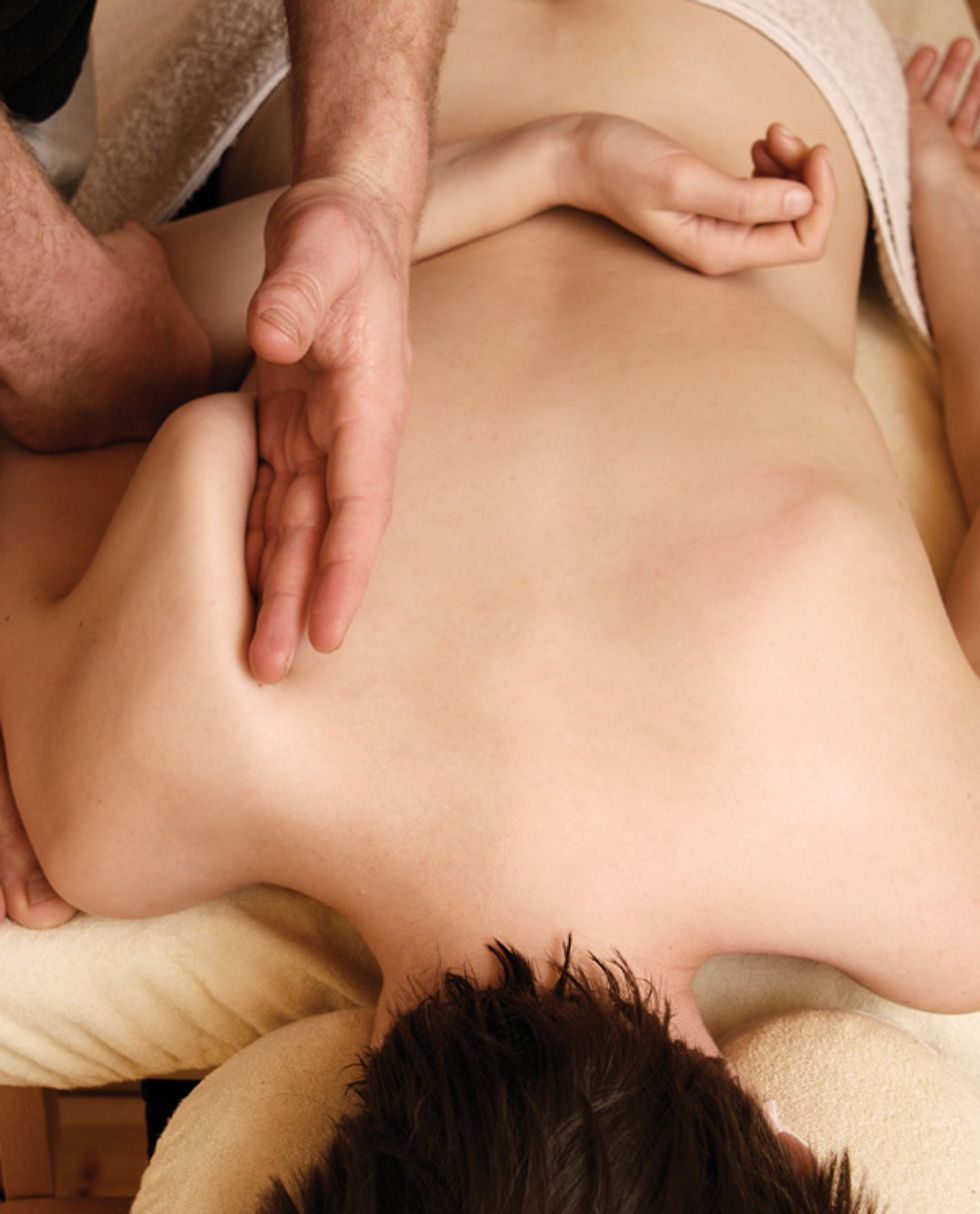Beyond the Spa

(iStock)
When most people think of massage, they imagine a luxurious, white-robed spa experience. But you don’t have to spend big bucks to get a good, beneficial massage. Basic massage therapy for dancers does more than relax and de-stress your body—it helps muscles recover faster by reducing inflammation and releasing tight spots. Getting massages on a regular basis will help keep your most important instrument well tuned—and all you have to do is lie there!
The different types of massage
Since dancers have unique demands placed on their bodies, they can benefit from several different types of massage. Pre-event massage, which is typically gentle and quick, is done 15 minutes to 3 hours before a rehearsal or performance, to increase circulation and warm up your muscles. Post-event massage, which may dig deeper into your sore, achy muscles, is done several hours after you dance, or even the next day. “When you do too much or overextend your muscles, having a massage can maximize how quickly you recover,” says Heather Southwick, director of physical therapy at Boston Ballet. “It also delays the onset of muscle soreness.”
Swedish massage is what you might find at a spa. It’s a relaxing style that involves a variety of light to medium touches: long strokes, kneading and tapping. “Swedish massage has a calming effect,” Southwick says. “Anything that helps your body relax is good for you. It gets you ready to meet your challenges.”
Deep-tissue massage is aimed at deeper muscles, tendons, ligaments and connective tissues. Its intense and focused pressure helps release chronic tension and promotes blood circulation. Deep-tissue massages may hurt a bit, but it should be a good pain.
Sports massage, designed specifically for dancers and athletes, uses a blend of techniques that cater to each individual. If you have a tight calf before a show, for example, a sports massage therapist will know how to target the area and get the necessary release without sacrificing your ability to perform.

(iStock)
The benefits and potential risks
“Active dancers experience a lot of wear and tear, inflammation and tightness due to all that hard work,” says David Brown, a licensed massage therapist who works with dancers from San Francisco Ballet and Alonzo King LINES Ballet. “Massages help maintain your body by lengthening and loosening your muscles.”
If you have an injury, massage is important for rehabilitation. But even healthy dancers need to maintain balance in their bodies so small aches and pains don’t become bigger problems. “No matter how flexible your muscles are, you still have muscle imbalances,” explains Southwick. “Preventing injury is all about keeping balance within your body.”
Yet there are times when dancers should avoid massage therapy. Getting deep-tissue work on the day of a show, for example, can tire your muscles and affect your performance. Dancers with torn muscles can actually worsen their injuries by applying too much pressure to and manipulating the painful area. Sometimes it’s hard to tell when a muscle is just tight or if it has some micro-tears. “If you get a massage and it still hurts afterward, follow up with a medical practitioner and do some icing and stretching,” says Emery Hill, athletic trainer for Houston Ballet. “Don’t keep rubbing it over and over again. The muscle is telling you it’s injured.”
The cost
The best way to find a reputable, licensed massage therapist near you is to consult websites like Yelp and check out reviews and ratings from fellow massage-seekers. For an hour-long massage, expect to pay around $60 depending on your location (big-city therapists may charge more, and massages at upscale spas can run up to a few hundred dollars).




